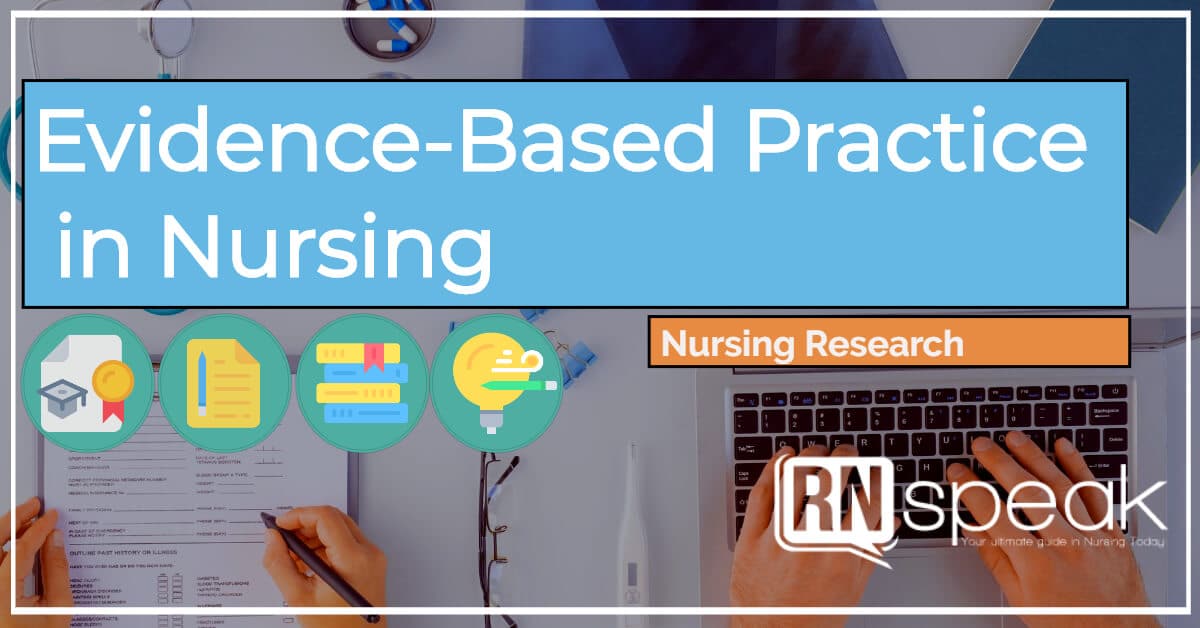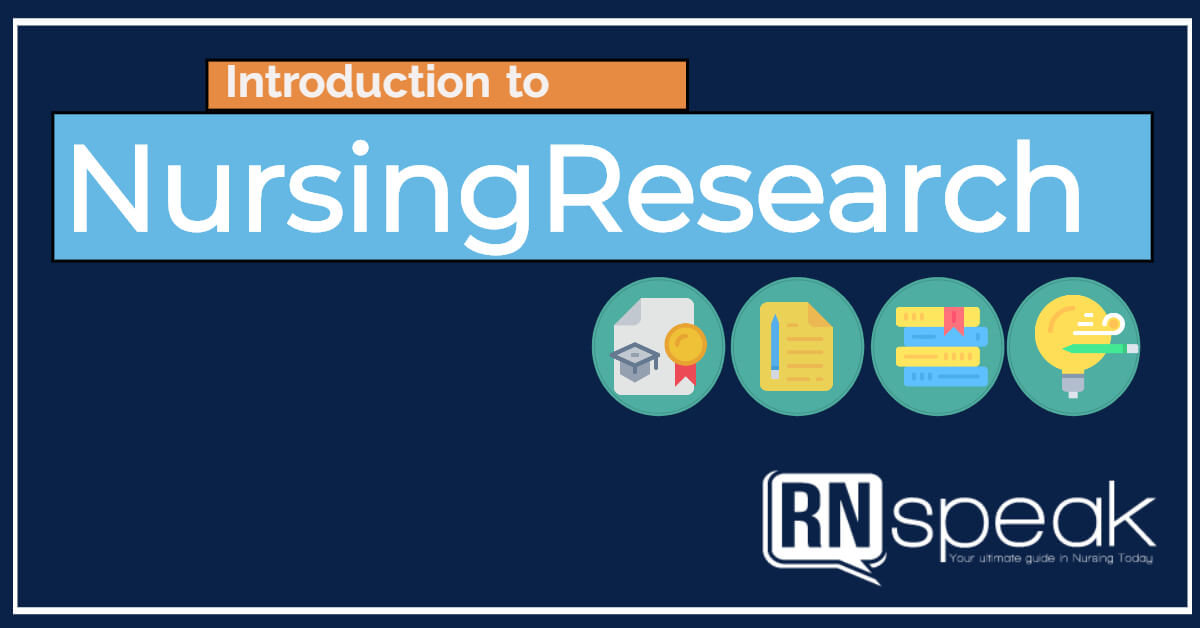Nursing discipline adapts to the fast-changing needs of the society, what is applicable yesterday may not be applicable today. The best practice of yesterday may no longer be needed in the coming future.
Nothing stands the test of time, but change. The rule of thumb for Evidence-based practice is either to confirm or to refute. A scientist once said, “A theory is only proven true if you attempted to refute it. If you confirmed its true then improved it. However, when a scientific theory is refuted, it is time to replace it.”
Evidence-based practice (EBP) is a lifelong problem-solving approach that incorporates the best evidence resulted from series or multiple well-designed studies and researches — utilizing a synthesis of a systematic search for the best answers to a critical clinical question and meticulous critical appraisal of most relevant issues and current problems affecting the clinical practice (Melnyk & Fineout-Overholt, 2019).
Furthermore, taking into the account of best decisions about patient care to achieve desired patient outcomes, the merging of science and art created the EBP organizational culture and environment within the context of caring that includes the following:
- Strong enough evidence-based theories and theoretical basis of research evidence.
- Recommendations for practice from clinical expertise and expert opinions with professional experiences and pieces of training generated from clinical judgment, shreds of evidence from management outcomes or quality improvement projects, clinical reasoning, and the availability of healthcare resources needed to implement evidence-based practice, as well as an evaluation tool to identify its efficacy.
- Patient and family preferences, priorities, culture, values, concerns, and expectations focus on the assessment and evaluation of available resources and capabilities.
How did it begin?
Evidence-based practice started in the 1800s by Florence Nightingale, and continue to advance along with the nursing discipline bridging the theory to practice gap (Mackey & Bassendowski, 2017).
The call for EBP was initiated by Dr. Archie Cochrane in 1970s, a British epidemiologist who criticized the medical profession for not providing systematic reviews of evidence in the effectiveness of healthcare (Melnyk & Fineout-Overholt, 2019).
By the late 1980s, evidence-based practice in nursing emerged in the midst of world debates over “What nursing is?”. McEwen & Wills (2019) agreed that nursing is a collaboration of applied and practical sciences as it requires research in its quest for new knowledge to be applied in the clinical practice which is generated from tested theories on the health of human beings as we interact with the environment.
The Quadruple Aims of EBP in Health Care
EBP is the conscientious use of current best evidence in making decisions about patient care targets the quadruple aims in the improvement of healthcare delivery system (Melnyk & Fineout-Overholt, 2019), such as:
- Enhances the quality of health care
- Improves patient outcomes
- Reduces healthcare costs and geographic variations in healthcare delivery
- Empowers health practitioners with higher job satisfaction rates
How to find a good topic for EBP study?
EBP is goal-oriented towards best practice to improve healthcare for best patient outcomes. Outcomes management (Melnyk & Fineout-Overholt, 2019) has four steps to follow such as:
- Define a clinical problem and the target outcome that needs to be improved.
- Formulate criteria on how the outcome will be measured.
- Identify practices supported by evidence to improve the outcome.
- Measure the effects of implementing the best practice on the target outcome.
How strong is strong enough EBP?
A strong enough evidence is needed to make practice change. The level of evidence plus the quality of evidence equals the strength of the evidence, enough to provide confidence among clinicians to initiate the needed change of practice (Melnyk & Fineout-Overholt, 2019).
There is no standard formula on how an EBP should be weighed in to qualify a clinical decision. Notwithstanding the constraints in approving EBP, rating systems and hierarchies of evidence are adapted to grade and evaluate the strength and quality of evidence resulted from research study or report (Nurse.com, 2020).
Furthermore, the website Nurse.com elaborated the rating system for strong EBP which ranges from Level A (the strongest) to Level C (the weakest) and Level ML (multilevel) for clinical practice guidelines with more than one level evidence.
LEVEL A, as the strongest level obtained evidence from randomized control trials and systematic review or meta-analysis, which provide the meticulous reviews of the best evidence on specific topics.
LEVEL B, evidence that is obtained from well-designed control trials without randomization, clinical cohort study, case-controlled study, uncontrolled study, epidemiological study, qualitative study, and quantitative study.
LEVEL C, as the weakest level with evidence obtained from consensus viewpoint and expert opinion, meta-synthesis, and case study.
LEVEL ML (multilevel), clinical practice guidelines and recommendations are based on more than one level of evidence in the rating system.
Seven Steps of Evidence-Based Practice
The seven steps of evidence-based practice which must be implemented meticulously in sequential order with conscientious full engagement to accomplish the target goals of improved patient, health provider, and system outcomes (Melnyk & Fineout-Overholt, 2019; Melnyk, et al., 2010) includes the following:
- Cultivate a spirit of inquiry within an evidence-based practice (EBP) culture and environment.
- Ask the burning clinical question in PICOT format.
- Search for and collect the most relevant best evidence.
- Critically appraise the evidence.
- Integrate the best evidence with one’s clinical expertise and patient/family preferences and values in making a practice decision or change.
- Evaluate the outcomes of the practice decision or change based on evidence.
- Disseminate the outcomes of the EBP decision or change.
Argue the Toss
Evidence does not lie, hence it is irrefutable as well. However, EBP remains to be hamstrung to successfully infiltrate the nursing discipline with its practitioners are resistant to change despite the quality and efficacy of the introduced EBP. Wide acceptance of EBP in the health care system grapples to success as most nurses particularly the old ones continue to foster old traditions and the culture of “this is the way we do it here” or “we are used doing like this way” (Melnyk & Fineout-Overholt, 2019).
Moreover, Melnyk & Fineout-Overholt (2019) elaborated on the hurdles that prevent the EBP to accelerates and sink-in the system such as:
- Lack of EBP qualified and skilled nurses that include competencies on knowledge, skills, beliefs about the value of EBP, mentorship in EBP, and organizational culture that supports EBP.
- Cultures steeped in tradition.
- Misconceptions or negative attitudes about research and EBP.
- Lack of time and resources to search for and critically appraise evidence.
- Overwhelming hospital workloads.
- Institutional constraints showing lack of support and incentives.
- Peer and leader/manager resistance.
- Resistance to change.
- Lack of authority and autonomy to change practice.
- Nurse leaders and managers uncertainty in measuring the outcomes of practice and the care being delivered.
- Budget allocations for resources, staff training and education.
- Issues on physical, emotional, and financial costs to patients and family members.
- The greater pressure on healthcare providers to provide the most up-to-date practices and health-related information due to mass health awareness widely available on the internet and social media.
- EBP evolves continually requiring staff and budget allocations.
While nurses get used of their working conditions, nursing practice becomes obsolete without the current best evidence which often has detrimental effects on the side of the patients. Without EBP patient care is at stake resulting in poor patient outcomes.
Whereas, utilization of best practice guidelines, reviewing, appraisal, and implementation of applicable research evidence will advance the nursing discipline into a well-informed profession. The cycle of interim interventions and eventual refutation makes the health care system progress.
Nursing discipline utilizes wide range of theoretical and practical knowledge in the practice, integrated with evidence-based practice will evolve the profession into a new level of well-informed discipline rendering the highest quality of care and best patient outcomes can be achieved.
References
- Melnyk, B.M., & Fineout-Overholt, E. (2019). Evidence-Based Practice in Nursing and Healthcare: A Guide to Best Practice, 4th Phiiadelpohia: Wolters Kluwer Health.
- Mackey, A. & Bassendowski, S. (2017). The History of Evidence-Based Practice in Nursing Education and Practice. Journal of Professional Nursing, 33(1), pp. 51-55. DOI: 10.1016/j.profnurs.2016.05.009
- McEwen, M. & Wills, E.M. (2019). Theoretical Basis For Nursing, 5th Phiiadelpohia: Wolters Kluwer Health.
- com. (2020). Evidence-Based Practice. Relias. Retrieved on 24 September, 2020 from https://www.nurse.com/evidence-based-practice.
- Melnyk, B.M., Fineout-Overholt, E., Stillwell, S.B., & Williamson, K.M. (2010). Evidence-Based Practice: Step by Step: The Seven Steps of Evidence-Based Practice. The American Journal of Nursing, 110(1), pp. 51-53. doi: 10.1097/01.NAJ.0000366056.06605.d2




